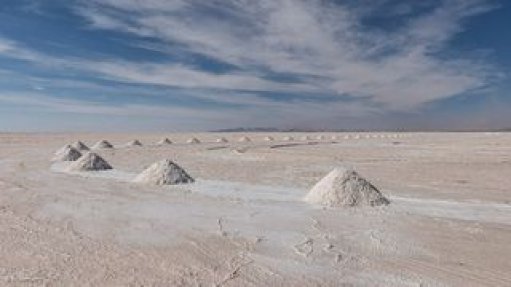When the heat is on: Stress and psychological safety in high-risk work environments
This article has been supplied by the author and has not been written or solicited by Creamer Media. It may be available only for a limited time on this website.
By Lani van der Merwe, Senior Consultant at OIM Consulting
In 2013, I found myself working on a project at a mine, where I was part of a team tasked with cadet assessment in a worker training programme. My job was to perform a series of assessments on the cadets, and based on their results, decide whether or not they should be hired by the mine.
One morning, I started a little earlier as I had a great deal of people to see that day. When I arrived at the mine, I was told I couldn’t enter as the police were on their way. After some asking around, it came to light that members of that mining community had cut a hole in the fence, entered the mine after hours, and burned the offices down of those of us doing the assessment. While my office was found with a petrol bomb inside it, it had luckily emerged mostly unscathed.
The sad reality is that this is hardly a random or out-of-ordinary occurrence. In many mining communities, competition for employment is high because there is an expectation that the presence of a mine will equate to thousands of jobs. Sadly, when these hopes are dashed, crime, vandalism and violence are often the result.
During this stressful time, what made a key difference to me in how I felt was that I was very fortunate to have a manager who understood the importance of putting me at ease. He created an environment where I had a greater understanding of the situation and therefore felt less unsafe.
A perfect storm for psychological stress
For those who find themselves working in a mine, this fear of becoming a target often brings additional stress, in an already highly charged work environment.
High-risk work environments inherently expose employees to various physical dangers, leading to a constant state of alertness and stress. Add to this the pressure to perform, worries concerning job security, fear of safety for oneself and one’s family and the constant fear of accidents, and it is no wonder that the industry is known for the type of acute psychological stress that contributes to burnout, anxiety, depression, and other mental health issues.
One research paper that studied mental health in mine workers concluded that “Mining can expose…workers to serious mental health problems and risk at work”, finding that a hazardous environment (e.g. risky conditions), work organisation (e.g. shift work schedules), interpersonal relations (e.g. work-family conflicts), psychosocial risk at work (e.g. high job demand, job stress), well-being (e.g. quality of life, job satisfaction), substance abuse, personality traits, psychological capital, somatic and physical affection (e.g. MSDs, pain) and other variables all played a role in mental health issues.
Psychological stress can have the following effects:
· Absenteeism: In response to high levels of stress, some employees may resort to absenteeism as a way to cope. Frequent absences can disrupt workflow and compromise safety.
· Presenteeism: Stress can lead to presenteeism, where employees show up for work but are mentally absent. They may be too preoccupied with their stressors to focus on their tasks, which can jeopardise safety in high-risk environments.
· Quiet quitting: Employees who feel psychologically unsafe may "quit" their jobs emotionally while still physically present. This disengagement can have a significant impact on productivity and safety.
· Burnout: Prolonged exposure to stress in high-risk environments can lead to burnout, characterised by emotional exhaustion, reduced performance, and feelings of helplessness.
· Strikes: When psychological safety is lacking, employees may resort to strikes as a last-ditch effort to bring attention to their concerns. Strikes can, in turn, disrupt operations and compromise safety.
· Risk-taking: Stressed employees may engage in risky behaviours to cope with their stress, which may increase the likelihood of accidents and injuries.
· Prolonged stress can also lead to psychological and physical ill health symptoms, such as depression, hypertension and more.
In the mining industry, where even minor oversights can have severe consequences, maintaining a healthy psychological state is crucial for decision-making, situational awareness, and safety.
Defining psychological safety
Psychological safety in the workplace refers to the belief that one can express their ideas, concerns, or challenges without fear of retribution, ridicule, or ostracism. In the context of high-risk environments, such as mines, psychological safety might mean the difference between life and death.
Psychological safety is not just about making employees feel good; it has tangible benefits for safety in high-risk environments. When workers are confident they can voice concerns, they are more likely to report potential hazards or issues, preventing accidents and saving lives.
Effective communication is the backbone of any safe work environment. A culture of psychological safety encourages open and honest communication, enabling workers to discuss concerns, collaborate on solutions, and ensure the smooth flow of information.
Employees who feel psychologically safe experience lower levels of stress, anxiety, and burnout, which directly contributes to better mental health. This, in turn, leads to increased job satisfaction and overall well-being.
The link between psychological and physical safety
If safety were a tree, psychological safety would be the root and physical safety, the leaves. In high-risk environments such as mining and its communities, where workers face constant challenges and dangers, a disease in the tree’s roots will quickly spread to its leaves.
When employees do not feel safe to express concerns or report potential hazards, it can lead to a breakdown in communication, decreased vigilance, and an increased likelihood of accidents. For instance, a production manager may exert pressure to meet production targets, causing employees to feel stressed. Prolonged stress can lead to burnout and absenteeism, affecting both psychological and physical well-being.
Creating psychological safety
At OIM Consulting, our supervisory development programme (SDP) focuses on creating an environment where workers feel empowered to speak up when they see potentially risky behaviour.
We do this through a programme that incorporates safety awareness training, a battery of individual safety tests that focuses on a person’s mindset, and 16 weeks of on-the-floor operational coaching, where we give workers tools that will not only allow them to become more effective in their roles but also contribute to psychological safety, such as how to have an effective team meeting and engage with others respectfully.
We also incorporate various levers, such as the team values charter. This is a process where we take the company values and interpret – in a tangible way – how these apply on an individual and team level. This enhances psychological safety through clearly defining the accepted behaviours, and the team holds one another accountable for these.
Recognising the risks of psychological stress and actively promoting a culture of psychological safety can lead to better communication, enhanced employee well-being, and ultimately, a safer workplace.
Addressing various manifestations of stress and ensuring the link between psychological and physical safety is clear, is essential to ensuring that when the heat is on, your people are safe.
Comments
Press Office
Announcements
What's On
Subscribe to improve your user experience...
Option 1 (equivalent of R125 a month):
Receive a weekly copy of Creamer Media's Engineering News & Mining Weekly magazine
(print copy for those in South Africa and e-magazine for those outside of South Africa)
Receive daily email newsletters
Access to full search results
Access archive of magazine back copies
Access to Projects in Progress
Access to ONE Research Report of your choice in PDF format
Option 2 (equivalent of R375 a month):
All benefits from Option 1
PLUS
Access to Creamer Media's Research Channel Africa for ALL Research Reports, in PDF format, on various industrial and mining sectors
including Electricity; Water; Energy Transition; Hydrogen; Roads, Rail and Ports; Coal; Gold; Platinum; Battery Metals; etc.
Already a subscriber?
Forgotten your password?
Receive weekly copy of Creamer Media's Engineering News & Mining Weekly magazine (print copy for those in South Africa and e-magazine for those outside of South Africa)
➕
Recieve daily email newsletters
➕
Access to full search results
➕
Access archive of magazine back copies
➕
Access to Projects in Progress
➕
Access to ONE Research Report of your choice in PDF format
RESEARCH CHANNEL AFRICA
R4500 (equivalent of R375 a month)
SUBSCRIBEAll benefits from Option 1
➕
Access to Creamer Media's Research Channel Africa for ALL Research Reports on various industrial and mining sectors, in PDF format, including on:
Electricity
➕
Water
➕
Energy Transition
➕
Hydrogen
➕
Roads, Rail and Ports
➕
Coal
➕
Gold
➕
Platinum
➕
Battery Metals
➕
etc.
Receive all benefits from Option 1 or Option 2 delivered to numerous people at your company
➕
Multiple User names and Passwords for simultaneous log-ins
➕
Intranet integration access to all in your organisation


















